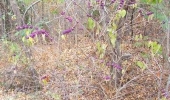








TCLynx








marina phillips wrote:Snow drift (tumultuous circular wind patterns in general) will be worst at the downwind distance of at two to three times the height of the windbreak.
"the qualities of these bacteria, like the heat of the sun, electricity, or the qualities of metals, are part of the storehouse of knowledge of all men. They are manifestations of the laws of nature, free to all men and reserved exclusively to none." SCOTUS, Funk Bros. Seed Co. v. Kale Inoculant Co.




 1
1




"the qualities of these bacteria, like the heat of the sun, electricity, or the qualities of metals, are part of the storehouse of knowledge of all men. They are manifestations of the laws of nature, free to all men and reserved exclusively to none." SCOTUS, Funk Bros. Seed Co. v. Kale Inoculant Co.








--
len
With peace and brightest of blessings,
"Be Content With What You Have And
May You Find Serenity and Tranquillity In
A World That You May Not Understand."
http://www.lensgarden.com.au/








The suggested within-row spacing of trees and shrubs is 4 to 6 feet; 10 to 16 feet for evergreen trees, and 12 to 20 feet for deciduous trees. For between row spacing, distances of 10 to 12 feet between shrubs, 15 to 20 feet between shrubs and trees, and 15 to 20 feet between trees are recommended. Windbreaks should be at least 100 feet from the nearest building




Gary












Gary




gary wrote:
Is this windbreak for protecting the house from cold north winds? Are you also trying to create warmer micro-climates for spring and fall? ... Still might have room for a row of evergreens in that 21'.




--
len
With peace and brightest of blessings,
"Be Content With What You Have And
May You Find Serenity and Tranquillity In
A World That You May Not Understand."
http://www.lensgarden.com.au/




Brenda
Bloom where you are planted.
http://restfultrailsfoodforestgarden.blogspot.com/




--
len
With peace and brightest of blessings,
"Be Content With What You Have And
May You Find Serenity and Tranquillity In
A World That You May Not Understand."
http://www.lensgarden.com.au/








--
len
With peace and brightest of blessings,
"Be Content With What You Have And
May You Find Serenity and Tranquillity In
A World That You May Not Understand."
http://www.lensgarden.com.au/









|
If a regular clown is funny, then a larger clown would be funnier. Math. Verified by this tiny ad:
The new gardening playing cards kickstarter is now live!
https://www.kickstarter.com/projects/paulwheaton/garden-cards
|





